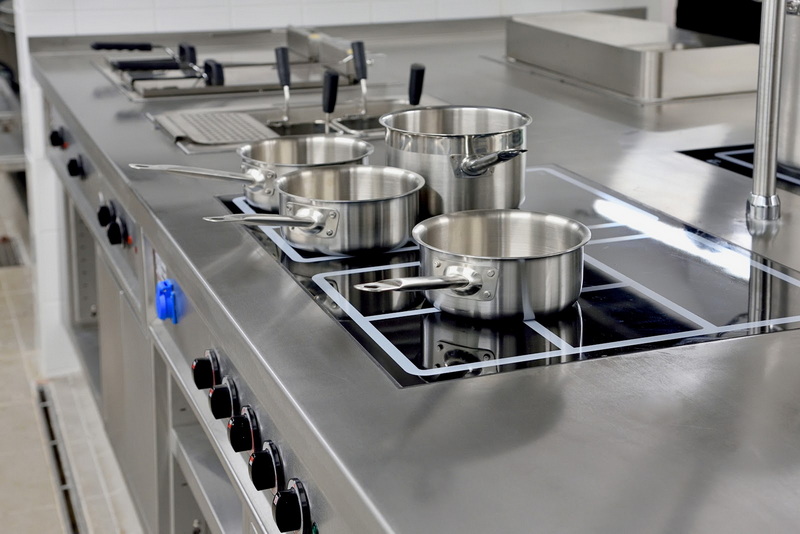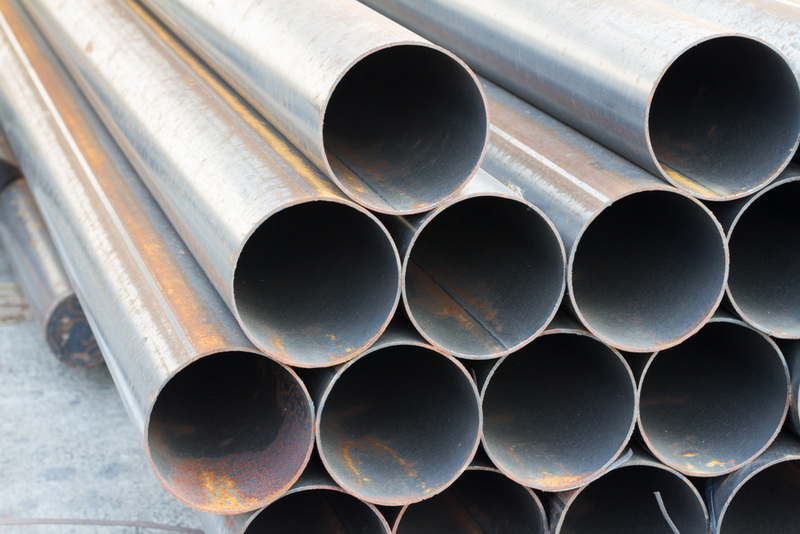English


Views: 222 Author: Tomorrow Publish Time: 2025-07-09 Origin: Site











Content Menu
● 1. Green Stainless Steel Production
● 2. AI and Automation in Stainless Steel Manufacturing
● 3. Advanced Stainless Steel Alloys and Coatings
● 4. Lightweight Stainless Steel Solutions
● 5. Circular Economy and Recycling Innovations
● 6. Smart Stainless Steel Products
● FAQ
>> 1. What is hydrogen-based stainless steel production?
>> 2. How does AI improve stainless steel manufacturing?
>> 3. What are duplex stainless steels?
>> 4. Why is lightweight stainless steel important?
>> 5. How is stainless steel recycled efficiently?
Stainless steel has long been a cornerstone material in industries ranging from construction to healthcare, thanks to its durability, corrosion resistance, and aesthetic appeal. As technology advances and market demands evolve, the stainless steel sector is witnessing a wave of innovations that are reshaping how this versatile material is produced, processed, and applied. This article explores the top stainless steel innovations currently transforming the market, highlighting breakthroughs in sustainability, manufacturing, and product performance.

The push for sustainability is revolutionizing stainless steel manufacturing. Traditional steel production is energy-intensive and a significant source of carbon emissions. To combat this, the industry is adopting green steel technologies that drastically reduce environmental impact.
One of the most promising advancements is the use of hydrogen-based steelmaking. Instead of relying on carbon-heavy blast furnaces, hydrogen serves as a clean reducing agent, emitting only water vapor. This shift is gaining momentum in Europe and Asia, where regulatory pressure and environmental awareness are highest.
Additionally, carbon capture and storage (CCS) technologies are being integrated into stainless steel plants to trap CO₂ emissions before they reach the atmosphere. Combined with increased use of recycled stainless steel scrap, these innovations are helping producers move toward net-zero carbon goals.
The adoption of electric arc furnaces (EAFs), which use electricity to melt scrap steel rather than coke, is another game-changer. EAFs consume less energy and generate fewer emissions, making them a cornerstone of sustainable stainless steel production.
Moreover, manufacturers are exploring the use of renewable energy sources such as solar and wind power to further reduce the carbon footprint of stainless steel production. Integrating renewable energy with EAFs can significantly lower greenhouse gas emissions, aligning the industry with global climate targets.
Artificial intelligence (AI) and automation are reshaping stainless steel fabrication, making production faster, more precise, and cost-effective. Smart factories equipped with Internet of Things (IoT) sensors enable real-time monitoring of equipment and processes, reducing downtime and waste.
Predictive maintenance powered by AI algorithms anticipates equipment failures before they occur, improving operational efficiency and safety. Robotic welding and cutting systems enhance precision and consistency, reducing material waste and improving product quality.
Moreover, digital twins—virtual replicas of manufacturing processes—allow engineers to simulate and optimize production lines without physical trials. This leads to faster innovation cycles and better resource management.
Automation also enhances worker safety by taking over hazardous tasks such as handling molten metal or operating heavy machinery. This not only protects human operators but also improves overall productivity.
Material scientists are developing new stainless steel alloys with enhanced properties tailored for specific applications. For example, high-performance duplex and super duplex stainless steels offer superior strength and corrosion resistance, making them ideal for harsh environments like offshore oil rigs and chemical plants.
In addition to strength and corrosion resistance, these advanced alloys exhibit excellent resistance to stress corrosion cracking and pitting, common challenges in aggressive environments. This extends the lifespan of components and reduces maintenance costs.
Innovations in surface coatings and treatments further extend the lifespan and functionality of stainless steel products. Nano-coatings that provide self-cleaning or anti-bacterial properties are becoming increasingly popular in healthcare and food processing industries.
These coatings can also impart hydrophobic or oleophobic properties, making stainless steel surfaces easier to clean and more resistant to staining. This is particularly valuable in architectural applications where appearance and hygiene are critical.
Additionally, customized surface finishes improve aesthetic appeal and corrosion resistance, allowing stainless steel to be used in more demanding architectural and design projects. Techniques such as electro-polishing and laser texturing create unique textures and finishes that enhance both function and form.

Reducing weight without compromising strength is a critical innovation area, especially in automotive and aerospace sectors where fuel efficiency and performance are paramount. New stainless steel grades with optimized microstructures offer high strength-to-weight ratios, enabling manufacturers to replace heavier materials without sacrificing durability.
These lightweight stainless steels contribute to lower emissions in transportation by improving fuel economy and reducing overall vehicle weight. Their enhanced formability also allows for complex shapes and designs, expanding their application scope.
Besides transportation, lightweight stainless steel is also gaining traction in consumer electronics and household appliances, where reducing weight improves portability and user experience without compromising durability.
Research into additive manufacturing (3D printing) of stainless steel is also enabling the production of lightweight, complex geometries that were previously impossible or too costly to fabricate. This technology allows for material optimization and waste reduction, further advancing lightweight solutions.
The stainless steel industry is embracing circular economy principles to minimize waste and maximize resource efficiency. Innovations in scrap sorting and recycling technologies allow for higher purity and quality of recycled stainless steel, reducing the need for virgin raw materials.
Advanced sensors and AI-driven sorting systems can distinguish between different grades and contaminants in scrap metal, ensuring that recycled stainless steel meets stringent quality standards. This closed-loop approach not only conserves resources but also reduces production costs and environmental footprint.
Furthermore, the development of traceability systems using blockchain technology helps track the origin and processing history of recycled stainless steel, ensuring transparency and promoting responsible sourcing.
Recycling stainless steel scrap uses significantly less energy compared to producing new steel from ore, making it an essential component of sustainable manufacturing practices. Increasing the percentage of recycled content in stainless steel products is a key goal for many producers.
The integration of smart technologies into stainless steel products is opening new frontiers. Embedded sensors and IoT connectivity enable stainless steel components to monitor their own condition, providing real-time data on stress, temperature, and corrosion.
Such smart stainless steel is invaluable in infrastructure, energy, and manufacturing sectors where early detection of wear or damage can prevent costly failures and downtime. This innovation enhances safety and extends the service life of critical assets.
In addition, smart stainless steel can interact with other connected systems to enable predictive maintenance and automated responses to changing conditions. For example, pipelines equipped with sensors can alert operators to leaks or pressure changes, allowing for immediate intervention.
Smart stainless steel is also being explored in consumer products, such as kitchen appliances and medical devices, where integrated sensors can improve functionality and user experience.
The stainless steel market is undergoing a dynamic transformation fueled by innovations in sustainability, manufacturing technology, material science, and smart integration. From hydrogen-based green steel production to AI-driven automation and smart stainless steel products, these advancements are not only improving performance and efficiency but also aligning the industry with global environmental goals. As these innovations continue to mature, stainless steel will remain an indispensable material, evolving to meet the demands of the future.

Hydrogen-based production uses hydrogen gas instead of carbon to reduce iron ore into steel, significantly lowering CO₂ emissions by producing water vapor as a byproduct.
AI enables predictive maintenance, robotic automation, and real-time process optimization, leading to higher efficiency, reduced waste, and better product quality.
Duplex stainless steels are alloys that combine austenitic and ferritic structures, offering enhanced strength and corrosion resistance for demanding environments.
Lightweight stainless steel reduces the weight of vehicles and aircraft, improving fuel efficiency and performance without compromising strength.
Advanced sorting technologies and AI systems separate scrap by grade and remove contaminants, ensuring high-quality recycled stainless steel that meets industry standards.
Stainless Steel Pipes Vs Galvanized Pipes: Durability And Cost Analysis
Comparing Stainless Steel Pipes And PVC Pipes: What You Need To Know?
Stainless Steel Pipes Vs Copper Pipes: Pros And Cons for Industrial Use
Seamless Stainless Steel Pipes Vs Welded Pipes: Key Differences Explained
Stainless Steel Pipes Vs Carbon Steel Pipes: Which One Suits Your Project?
Stainless Steel Sheets Vs Galvanized Steel Sheets: Pros And Cons Compared
Stainless Steel Sheets Vs Aluminum Sheets: Which One Suits Your Project?
Cold Rolled Vs Hot Rolled Stainless Steel Sheets: Key Differences Explained
How To Choose Stainless Steel for Industrial Guardrails And Railings?
